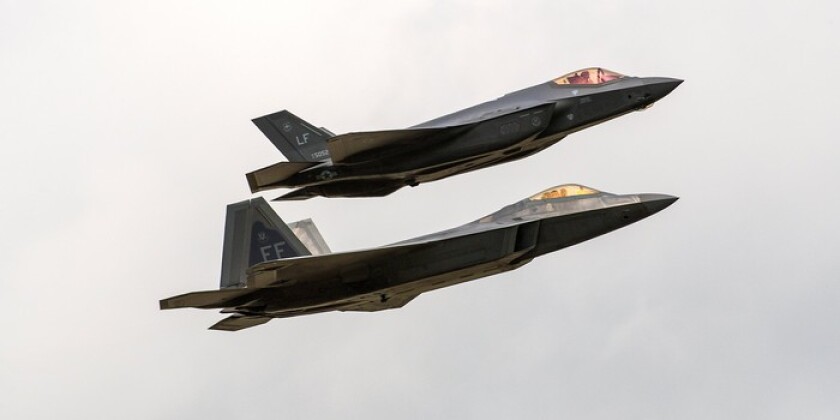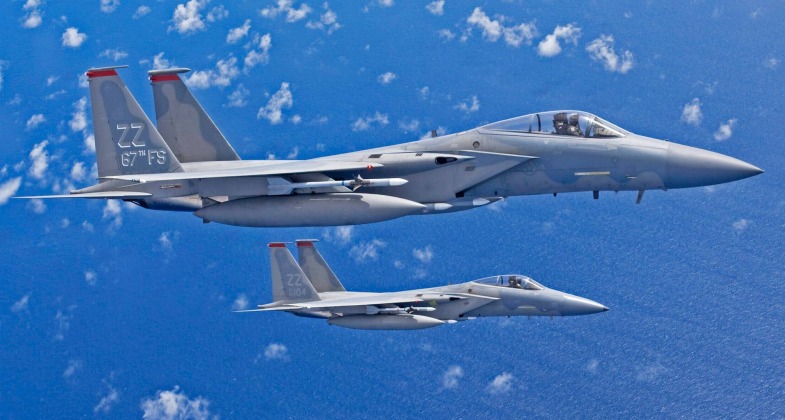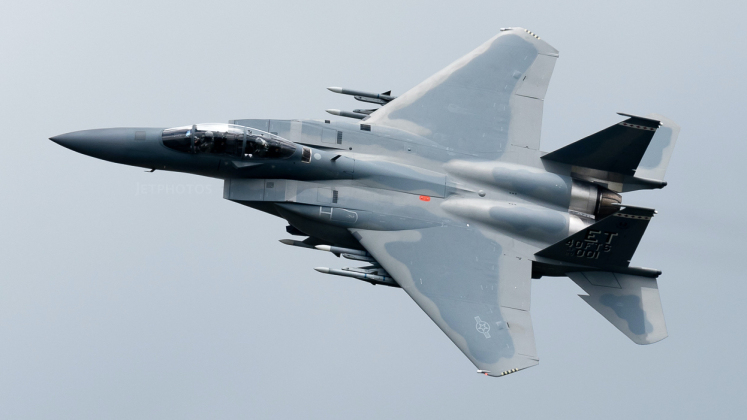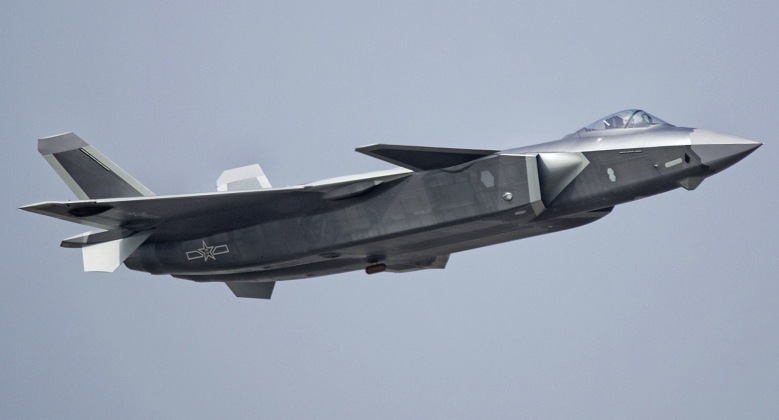News
Stealth Fighters Against China: Why F-22s and F-35s Are Replacing F-15s at America’s Top Airbase Near Taiwan
The United States is continuing to deploy new F-35 fifth generation fighters to Kadena Air Base in Okinawa, where they are replacing ageing F-15C/D Eagle aircraft from the previous generation which were kept on permeant deployment there for over four decades. The F-35As are being deployed from the 355th Fighter Squadron from Eielson Air Base in Alaska, and arrived from March 28. The U.S. Pacific Air Forces reported at the time: “The next batch of F-15s will depart Kadena in phased movements over the coming months. Departures will occur once sufficient deployed forces are in place and operational to ensure no gap in steady-state fighter presence.” The F-15’s withdrawal announced in 2022 was widely seen to be a response to the class’ growing obsolescence in the face of increasingly sophisticated Chinese capabilities in the region, as well as the age of the Cold War era airframes themselves which has increased operational costs and lowered availability rates. The F-15 was by far the Western world’s most capable air superiority fighter during the Cold War, and remains by far the longest ranged Western fighter class, although the lack of a viable successor due to serious issues with the fifth generation F-22 fighter program forced the class to remain in service far longer than expected.

Regarding the state of the F-15s being withdrawn deputy chief of staff for plans and programs Lieutenant General Richard G. Moore, Jr. informed the U.S. House Armed Service subcommittee March 29: “F-15Cs: last year when we were here, there were two aircraft at Kadena that were grounded and would never fly again, and two more that could only fly a one-time flight to the Boneyard. Now it’s three that are grounded forever and four that can only that are only capable of one-time flight to the Boneyard. Of every 10 aircraft in the F-15C fleet that we put into depot, only two of them come out.” The bulk of old F-15s are thus set to be immediately retired from service, although some may reportedly serve for a few years more in the Air National Guard. The permeant deployment of F-15s has been replaced by a rotating deployment including F-22s from Joint Base Elmendorf-Richardson, also in Alaska, as well as the newly deployed F-35s. Fourth generation F-16s from Spangdahlem Air Base in Germany have also helped shoulder the burden of maintaining a presence in the region.

Regarding the rotational deployments of F-35s to Kadena the 18th Wing reported “the F-35 squadron plans to rotate personnel and equipment to multiple operating locations in order to support the Theater Joint Force Air Component Commander and the 18th Wing while maintaining readiness for the high-end fight.” The fighter is nevertheless considered unready for high intensity combat, with approximately 800 performance defects still remaining unresolved while its F135 engine’s significant reliability issues have been a key driver of very low availability rates. As the Air Force moves to retire the troubled F-22, however, the F-35 despite its shortcomings remains the only fifth generation fighter in production in the Western world, and thus the only one capable of operating on a similar level to new Chinese fighters such as the J-20. Rotational deployments using F-35s and other aircraft could be replaced by a permeant deployment of another fighter class, with the new F-15EX considered a leading candidate. The F-15 is the oldest fighter still in production today, and while lacking the fifth generation stealth features of the F-35, it has much higher availability rates and is considered fully combat ready and far more reliable. F-15EXs have been acquired at a very low rate, however, and it could be several years before sufficient numbers are ready to support a large permeant deployment to fully replace Cold War era F-15s.

Kadena is the closest U.S. military facility to the Taiwan Strait, which is considered a leading potential hotspot for conflict between Chinese and U.S. forces. This has made the capabilities of the air units based there particularly important to American security interests. When first deployed the F-15s are Kadena the most capable combat aircraft in the region for air to air missions, although this had within five years been challenged by deployments of Soviet MiG-31 interceptors and Su-27 fighters both of which enjoyed significant performance advantages. China’s acquisition of Su-27s in 1990, which were widely seen to have been acquired specifically to counter the F-15, marked the beginning of a decline in the F-15’s superiority over the Chinese fleet. This only became more extreme as the country began to field advanced Su-27 derivatives such as the J-11B. By the mid 2010s reports from U.S. government sources indicated that even lower end much lighter Chinese fighters such as the J-10 could enjoy a significant edge over F-15s in combat.

The odds facing F-15s at Kadena worsened considerably further from 2017 with the entry into service of China’s first fifth generation fighter the J-20. The J-20 is a twin engine air superiority fighter like the F-22, but has enjoyed much greater confidence from China’s air force than its American rival did from the U.S. Air Force. As a leading symbol of growing Chinese aerial warfare capabilities, the J-20 has been a key cause of concern for U.S. forces in the region. The fighter is considered far less problematic, has been produced in much greater numbers and has cutting edge avionics comparable to those of the F-35 leaving the older F-22 far behind.The J-20 and F-35 had their first encounter confirmed in March 2022, and are considered in a league of their own in terms of their capabilities and particularly their combination of stealth and cutting edge avionics. While no other countries are expected to develop similarly capable fighters for the foreseeable future, China and the U.S. are currently competing neck to neck to develop the world’s first sixth generation fighters.












